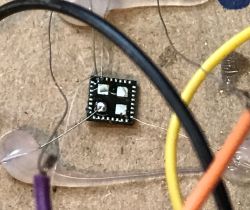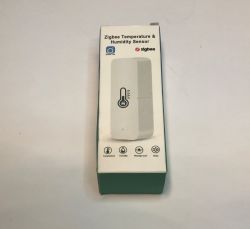Hello,
I have made a system for home automation on Openhab + Raspberry PI, the first thing I would like to hook up is the irrigation system and I have a problem with the voltage that goes from the relays to the electro-valves. The solenoid valves I have (from Rain Bird) need 24 volts AC. I have the original power supply that powered the old Hunter 24 V AC (1A) controller, however, when connected to the relays it gives 27.1 V (no load) and 26.7 V (with one watering valve on).
1 I tried to lower the voltage with a voltage divider at my place it comes out around 60 Ohm and gets this 24 V AC but unfortunately the potentiometer (I had a 10k Ohm max potentiometer) burns out (at 60 Ohm it is still stable but after 2 min the temperature rises a bit and the resistance goes up a lot). As this resistance is b. small, and I used the potentiometer as a resistor for this purpose, will a normal resistor burn? Or is there some circuit to stabilise the AC voltage? ( as far as I know the max current of 1 valve is 0,6 A)
The most convenient way would be to buy a 24V AC stabilised power supply, but I can't find one (the power supplies I can find are unstabilised, so probably the transformer itself, so the situation will be similar)
3 I've disassembled the original Hunter controller and there the voltage is rectified, then the L7824CV stabilizer stabilizes 24 V DC and then probably somehow the voltage is converted to AC again. A bit of a lot of soldering, hopefully it can be made simpler.
4 I also bought a transformer for 230V -> 24 V but it too gives a higher voltage (27,5 V) when loaded (one valve on). If the output voltage of the transformer depends on the resistance of the circuit, are there any parameters of the transformer that would help me choose the right one (so that the output is 24 V)
I would still like to add that due to the project, this power supply / transformer has to run continuously 24/7
I am interested in the simplest option, I can spend a little more money on a better power supply
I have made a system for home automation on Openhab + Raspberry PI, the first thing I would like to hook up is the irrigation system and I have a problem with the voltage that goes from the relays to the electro-valves. The solenoid valves I have (from Rain Bird) need 24 volts AC. I have the original power supply that powered the old Hunter 24 V AC (1A) controller, however, when connected to the relays it gives 27.1 V (no load) and 26.7 V (with one watering valve on).
1 I tried to lower the voltage with a voltage divider at my place it comes out around 60 Ohm and gets this 24 V AC but unfortunately the potentiometer (I had a 10k Ohm max potentiometer) burns out (at 60 Ohm it is still stable but after 2 min the temperature rises a bit and the resistance goes up a lot). As this resistance is b. small, and I used the potentiometer as a resistor for this purpose, will a normal resistor burn? Or is there some circuit to stabilise the AC voltage? ( as far as I know the max current of 1 valve is 0,6 A)
The most convenient way would be to buy a 24V AC stabilised power supply, but I can't find one (the power supplies I can find are unstabilised, so probably the transformer itself, so the situation will be similar)
3 I've disassembled the original Hunter controller and there the voltage is rectified, then the L7824CV stabilizer stabilizes 24 V DC and then probably somehow the voltage is converted to AC again. A bit of a lot of soldering, hopefully it can be made simpler.
4 I also bought a transformer for 230V -> 24 V but it too gives a higher voltage (27,5 V) when loaded (one valve on). If the output voltage of the transformer depends on the resistance of the circuit, are there any parameters of the transformer that would help me choose the right one (so that the output is 24 V)
I would still like to add that due to the project, this power supply / transformer has to run continuously 24/7
I am interested in the simplest option, I can spend a little more money on a better power supply





